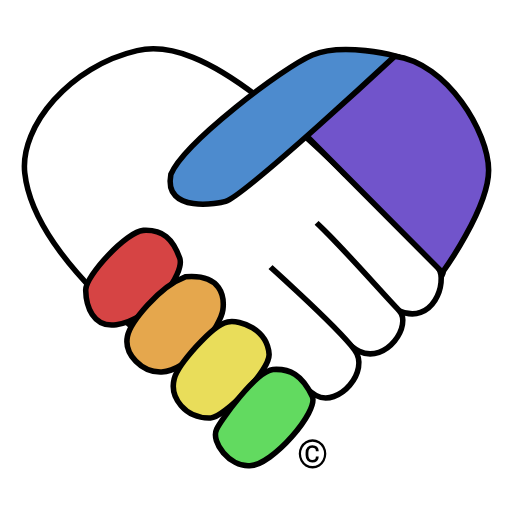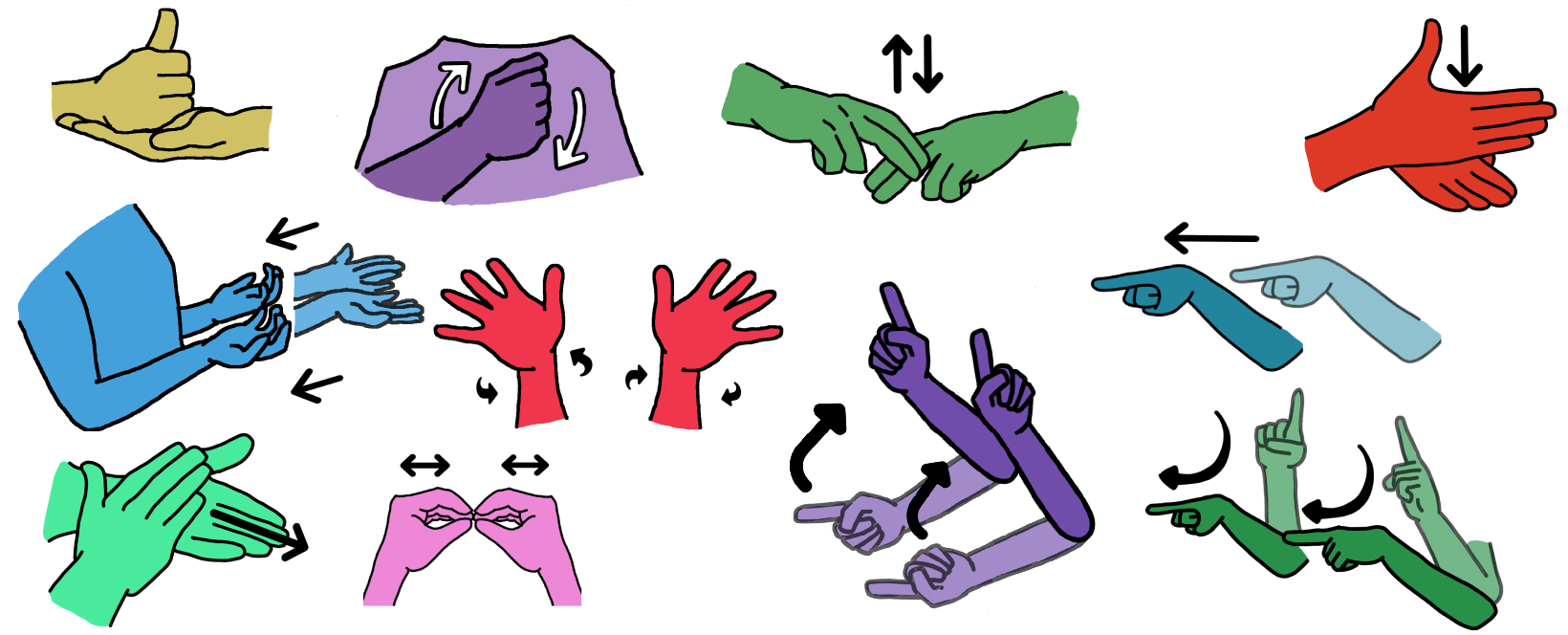By a former special education teacher, AuDHD adult, and parent to neurodivergent kids.
Intentionally Communicating with Your Hands for the Neurodiverse Population
Today’s topic might spark a few questions right away:
- What does “communicating with your hands” even mean?
- Is she talking about American Sign Language?
While hand-based communication can include American Sign Language (which I use and wholeheartedly encourage!), that’s not what we’re focusing on today.
This post is about something simpler, powerful: using your hands and body language in repetitive ways while speaking to support autistic and ADHD individuals. It’s an easy, effective accommodation that can make a big difference in how we connect, process, and understand each other.
If that sounds a little abstract, don’t worry — I’ll walk you through:
- Why this strategy matters
- How it supports comprehension and safety
- Simple ways to start using it in your daily life
And yes — we’ve got some freebies to help you get started, too!
Related Article link: Creating a Custom Support Folder for your ADHD or Autistic Child
Is Verbal Speech Enough to Support Autistic and ADHD People?
Short answer? Not always.
The longer answer is more nuanced — because there are many unique reasons why verbal speech can be difficult for neurodiverse individuals.
Some conditions, like audio processing issues, are more straightforward. Verbal speech can be literally hard to hear or decode, so adding visual and kinesthetic components (e.g. gestures or pictures) helps reinforce the message.
Related link: What are audio processing issues?
But other challenges are not so straight forward.
Maybe someone with ADHD has significant trouble focusing on individual words. Thus seeing pictures or seeing familiar hand signals would help refocus them towards the topic at hand.
Maybe the neurodiverse person has low muscle tone in their face (like me!) and it can make it harder to control certain syllables. It can often be easier to give an ASL sign than speaking a whole sentence to say the same thing.
Whatever the reason, the solution is often the same:
Add a physical component — gestures, hand signals, pictures, or ASL — to reinforce verbal speech.
One example I love to use is trying to talk to someone at a rock concert. There are loud sounds, lots of movements, smells, and chaos all around. In that environment, a familiar gesture or written instruction is far easier to understand than spoken words.
While I always encourage learning ASL, I also know from experience that there are barriers to learning more than a few basic signs. But those roadblocks shouldn’t stop you from using hand signals or adjusting your speaking style to better support autistic and ADHD communication.
Even small changes — like pointing, miming, or using consistent gestures — can make a big difference. But I’m here to give you specific strategies to try out.
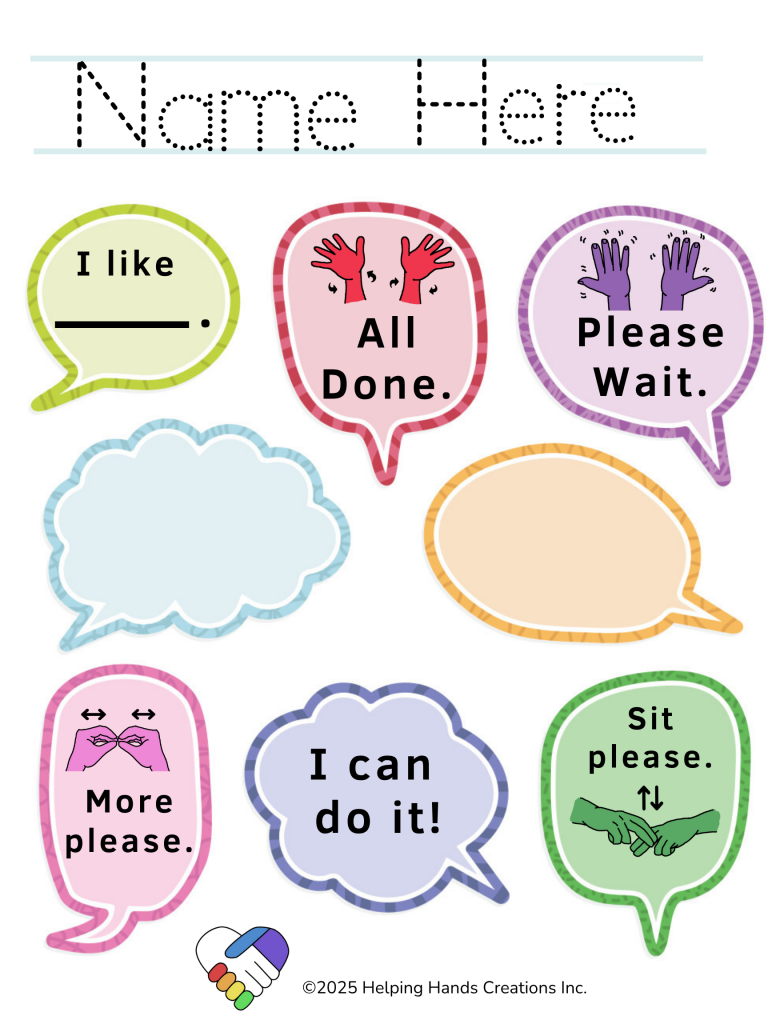
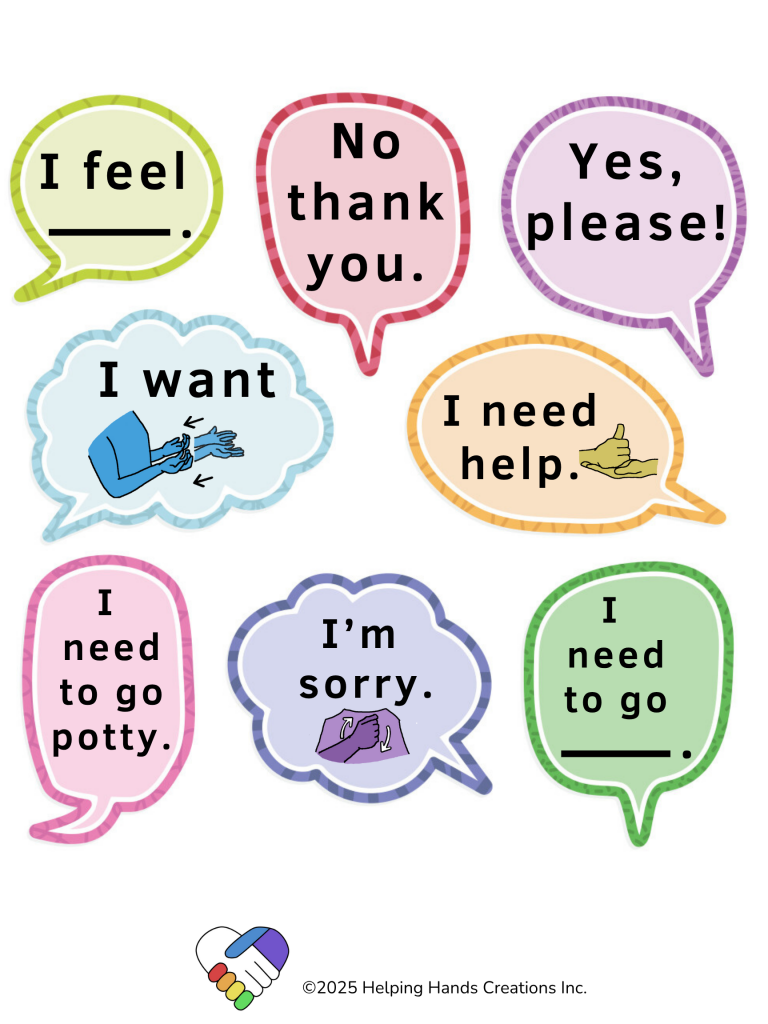
Related link: ASL Sentence Stems of Classroom Essential Phrases
What Other Benefits to using Hand Gestures for Autistic and ADHD People?
In my household, hands aren’t just for talking — they’re part of our rituals and routines. We use gestures intentionally, not only to support communication but also to protect our kids and keep them safe.
One example is our family rule: “Hands to self.”
When I say this, my kids immediately hug themselves. We practiced this twice a day for a year, so I know they’ve internalized it. This simple gesture has become a safety tool:
- If they move toward something unsafe, like an open flame, “hands to self” keeps them safe.
- If play gets too rough, their hands are pulled back safely from the situation.
- If they’re distressed and are at risk for self-harm, the gesture redirects their hands into a safe position.
It’s why I often repeat: “Busy hands are safe hands.”
When overstimulation makes it hard to think, speak, or move, having a familiar gesture to fall back on is grounding. These are NOT one off gestures, but intentionally repetitive movements we use for daily tasks and situations.
Gestures can also become rituals for regulation.
A recent habit I’ve introduced: when my kids are upset and crying, I place one hand on my chest and one on my stomach and say, “Let’s do deep whale breaths together.”
I am teaching them:
- To place their hands in safe spots
- Support their deep breathing technique
- Gives them a ritual to fall back on when panicked
I do my best to model the behavior as well. If we are tickling each other and someone accidentally pulls my hair? That’s the perfect time to:
- Pause:
- “That hurt, I need a break.”
- Reflect:
- “I am sad, I need deep breaths”
- Ritual:
- Breathe deeply and press my hands in their designated spots
Even children who are non-speaking can benefit from this modeling. By consistently showing safe, regulating gestures, we set a baseline for them to follow. Whether or not they respond right away, they’re watching, absorbing, and learning.
Autism and ADHD are known for their repetitive movements and gestures, this strategy is about surrounding ourselves with intentional and helpful ones.
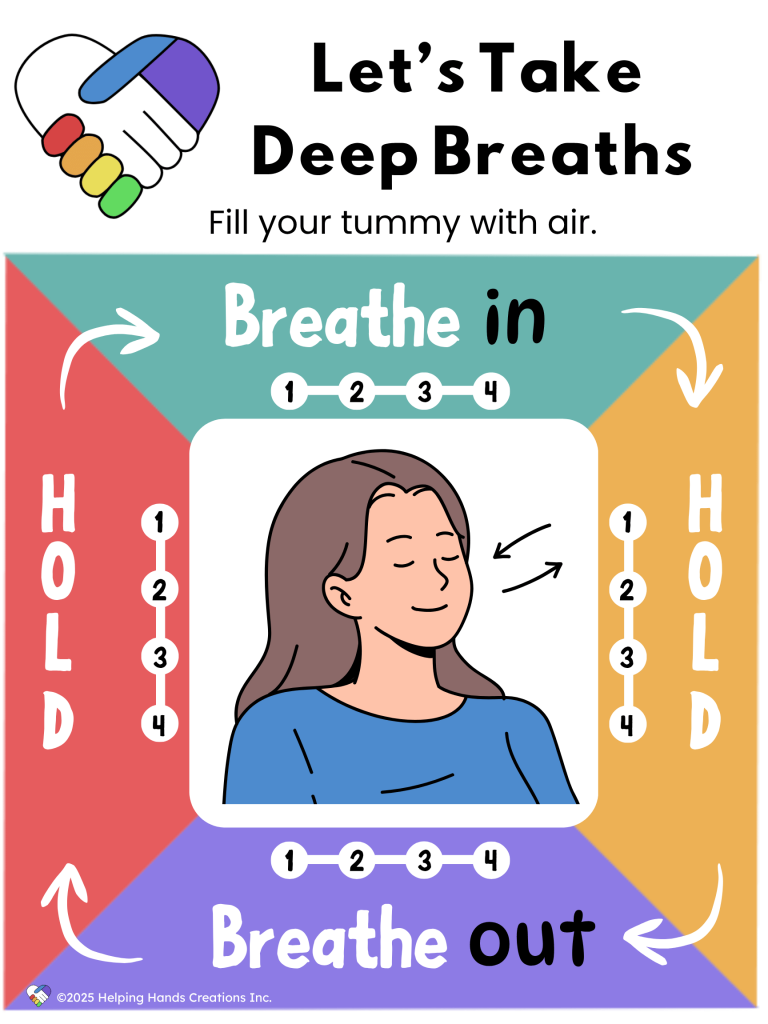
Source: Free Paced Breathing Poster from Helping Hands Creations Inc.
Related links: Check out our premium Whale Poster!
Conclusion
At its core, communication is simply the exchange of ideas. As long as the other person can comprehend the message being shared, that is communication.
It doesn’t matter whether those ideas are expressed through words, pictures, gestures, or ASL alongside verbal speech. What matters most is that needs are met and that we meet others where they are.
I hope this article offers encouragement and practical support for you and your family’s journey — reminding us all that communication is about connection and being flexible to support one another.
✨ Try one simple gesture today.
Choose something small — like miming “hands to self” or placing a hand on your chest while breathing — and use it once in your daily routine.
💬 Reflect and share.
Tell us how it felt! It may take time before it becomes a habit, but every routine starts with a first step. Share your experience so others can learn from your journey.
📣 Share your experience: If you already use hand signals or rituals, I’d love to hear what works for you. Drop a comment or story so others can learn from your ideas, too.
